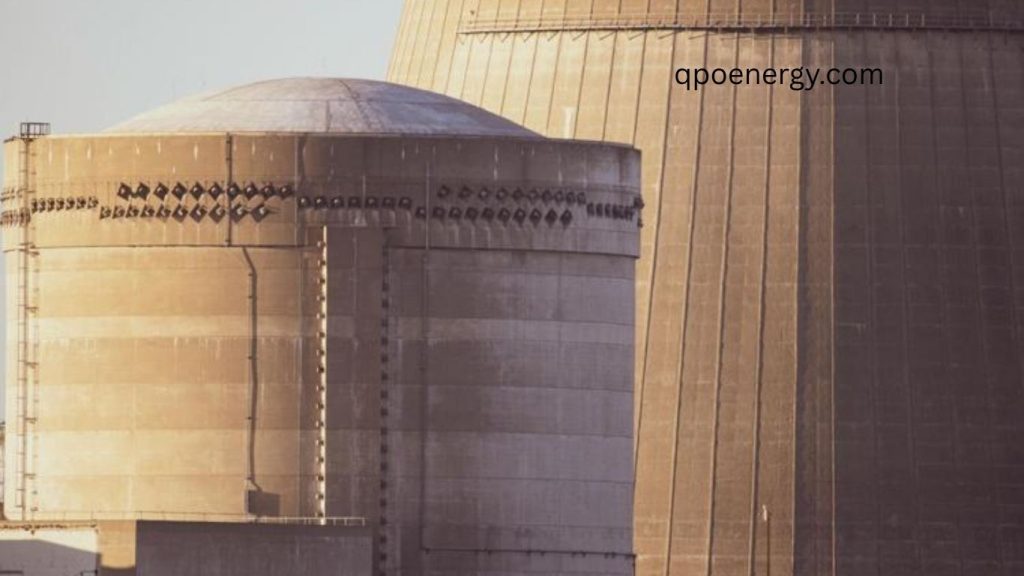Nuclear energy in the United States has long carried a complicated reputation. For many, the term still evokes images of bombs, meltdowns, or Homer Simpson’s fictional workplace at the Springfield nuclear plant. Despite decades of skepticism, experts argue that nuclear power remains one of the safest and most efficient energy sources available—and small modular reactors (SMRs) may soon reshape its future.
A History of Promise and Setbacks
In the 1950s and 1960s, nuclear energy inspired extraordinary optimism. Americans envisioned a future where nuclear power fueled everything—from homes and industries to cars and even space exploration. The promise of virtually limitless clean energy sparked a wave of enthusiasm and investment.
But the dream faltered. Early nuclear projects faced cost overruns, delays, and regulatory hurdles. According to Dr. Gary Was, professor of nuclear energy at the University of Michigan, the first wave of power plants quickly ran into economic challenges. Construction stretched far beyond initial timelines, inflating costs and discouraging investment.
The partial meltdown at Three Mile Island in 1979 intensified public concern, even though no lives were lost. The incident triggered sweeping regulatory changes that forced retrofits on plants under construction, further delaying progress. Adding to the financial strain, inflation soared in the late 1970s, making nuclear projects even less viable.
Then came Chernobyl in 1986. The disaster shocked the world, devastating communities across Eastern Europe and delivering what many viewed as the final blow to nuclear expansion in the 20th century.
Renewed Interest in the 21st Century
The dawn of the new millennium brought technological breakthroughs that rekindled hopes for nuclear energy. Fourth-generation reactors promised safer, more efficient, and more cost-effective designs. Utilities began filing applications to build new plants, and by 2007, plans for 37 reactors across 15 states were on the table.
But external crises once again stalled momentum. The 2008 financial meltdown dried up financing, and Japan’s Fukushima disaster in 2011 reignited public fears. Of the 37 planned reactors, only two were ultimately built—one in Tennessee and one in Georgia.
As of 2022, the U.S. operated 92 nuclear plants, down from its peak of 112. Yet output was higher than ever, thanks to technological upgrades that improved efficiency and lowered operating costs. The pattern was clear: nuclear energy could deliver, but its slow, expensive construction cycle made it highly vulnerable to economic and political shocks.
Enter Small Modular Reactors (SMRs)
Today, small modular reactors are being hailed as a potential solution to nuclear energy’s long-standing challenges. As the name suggests, SMRs are smaller, factory-built reactors designed for easier deployment. According to the International Atomic Energy Agency, an SMR generates about half the electricity of a traditional reactor but requires significantly less space and infrastructure.
“SMRs take lessons from conventional reactors but package them to be more reliable, affordable, and quicker to deploy,” explained Katy Huff, former assistant secretary of nuclear energy at the U.S. Department of Energy and professor at the University of Illinois.
The major advantage lies in construction. Traditional reactors resemble mega-projects like high-speed rail or major airports—expensive, slow-moving, and plagued by delays. SMRs, on the other hand, can be manufactured in factories, transported to their sites, and assembled with far fewer complexities.
“I think we’ll be building them more like airplanes than airports,” Huff said.
Safety: Fact vs. Perception
Safety remains the central question in the nuclear debate. Incidents like Chernobyl and Fukushima left deep scars on public opinion, but the data paints a different picture.
According to the World Health Organization, fossil fuel pollution causes 6.7 million premature deaths worldwide each year. By contrast, nuclear power has caused relatively few fatalities. Three Mile Island had zero deaths, Fukushima recorded none directly from radiation exposure, and Chernobyl—while devastating—resulted in fewer than 50 immediate deaths, with long-term health impacts still studied.
“Nuclear, simply by being emissions-free, does an incredible job of keeping people safe,” Huff emphasized.
SMRs may enhance this safety profile. Their smaller size means fewer components that can fail, and if a shutdown is needed, the residual heat is significantly less than in traditional reactors. This reduces the risk of catastrophic meltdown.
The Economic Debate
While SMRs show promise, not everyone is convinced. Austin Cooper, a professor of technological history at Purdue University, cautions against treating nuclear technology as a “magic bullet.”
“The glory of nuclear energy often outshines the reality—you’re just boiling water,” he said.
Cooper warns that focusing too heavily on SMRs could overshadow investments in renewable technologies like wind, solar, and energy storage. These alternatives, he argues, may offer more cost-effective paths to carbon-free electricity.
“If wind and solar plus storage can get you there more cheaply than nuclear, why write that off?” he asked.
The heart of the debate lies not in nuclear versus renewables, but in building a diverse, reliable, and affordable energy mix. SMRs could be a vital tool, but they must compete on cost and practicality, not just technological appeal.
A Roller Coaster Future
The story of nuclear energy in the United States has been a roller coaster of promise, setbacks, and rebirths. Each wave of optimism has collided with economic pressures, accidents, or shifting public sentiment.
Today, small modular reactors represent a new chapter. If successful, they could solve nuclear power’s most persistent problems: cost, construction time, and public trust. Yet they remain largely untested, and questions linger about whether they can deliver at scale.
One thing is clear: as the U.S. races toward decarbonization goals, nuclear energy—whether through SMRs or updated traditional reactors—will continue to be part of the conversation.
Frequently Asked Questions:
Why is nuclear energy considered one of the safest energy sources?
Despite public fears, nuclear energy has far fewer deaths per unit of electricity produced compared to fossil fuels. Major incidents like Three Mile Island and Fukushima resulted in zero radiation-related deaths, while air pollution from fossil fuels causes millions of premature deaths annually.
What are Small Modular Reactors (SMRs) and how do they differ from traditional reactors?
SMRs are compact nuclear reactors built in factories and transported to sites for assembly. Unlike traditional large-scale reactors, they are quicker to deploy, more affordable, and designed with enhanced safety features.
Can SMRs solve the cost and construction challenges of nuclear energy?
Yes, SMRs aim to reduce costs by using standardized, factory-built parts, cutting down on delays and budget overruns common in traditional reactor projects.
Are Small Modular Reactors safe?
SMRs are engineered with advanced safety systems. Their smaller size reduces the risk of overheating, and in the event of a shutdown, residual heat is significantly lower than in traditional reactors.
Will nuclear energy replace renewable sources like wind and solar?
Not necessarily. Experts see nuclear energy, particularly SMRs, as part of a balanced energy mix. While wind and solar are essential for clean power, nuclear provides a stable, carbon-free source of electricity that complements renewables.
How many nuclear power plants currently operate in the United States?
As of 2022, the U.S. operates 92 nuclear reactors, down from its peak of 112, yet they generate more electricity than ever due to efficiency upgrades.
Why did nuclear energy projects stall in the past?
Cost overruns, construction delays, stricter regulations after accidents, and economic downturns like the 2008 financial crisis caused many nuclear projects to be canceled or abandoned.
Conclusion
The story of nuclear energy in the United States has been one of ambition, setbacks, and resilience. From the early optimism of the 1950s to the devastating shadows of Chernobyl and Fukushima, nuclear power has endured a turbulent journey shaped by public fear, economic challenges, and regulatory shifts. Yet, despite these obstacles, it remains one of the cleanest, most efficient, and safest sources of energy available. Today, small modular reactors (SMRs) offer a new path forward. Their innovative design, reduced construction complexity, and enhanced safety features could help overcome the very issues that stalled nuclear development in the past. While SMRs are not a guaranteed solution, they represent a promising step toward achieving America’s clean energy goals and reducing dependence on fossil fuels.


